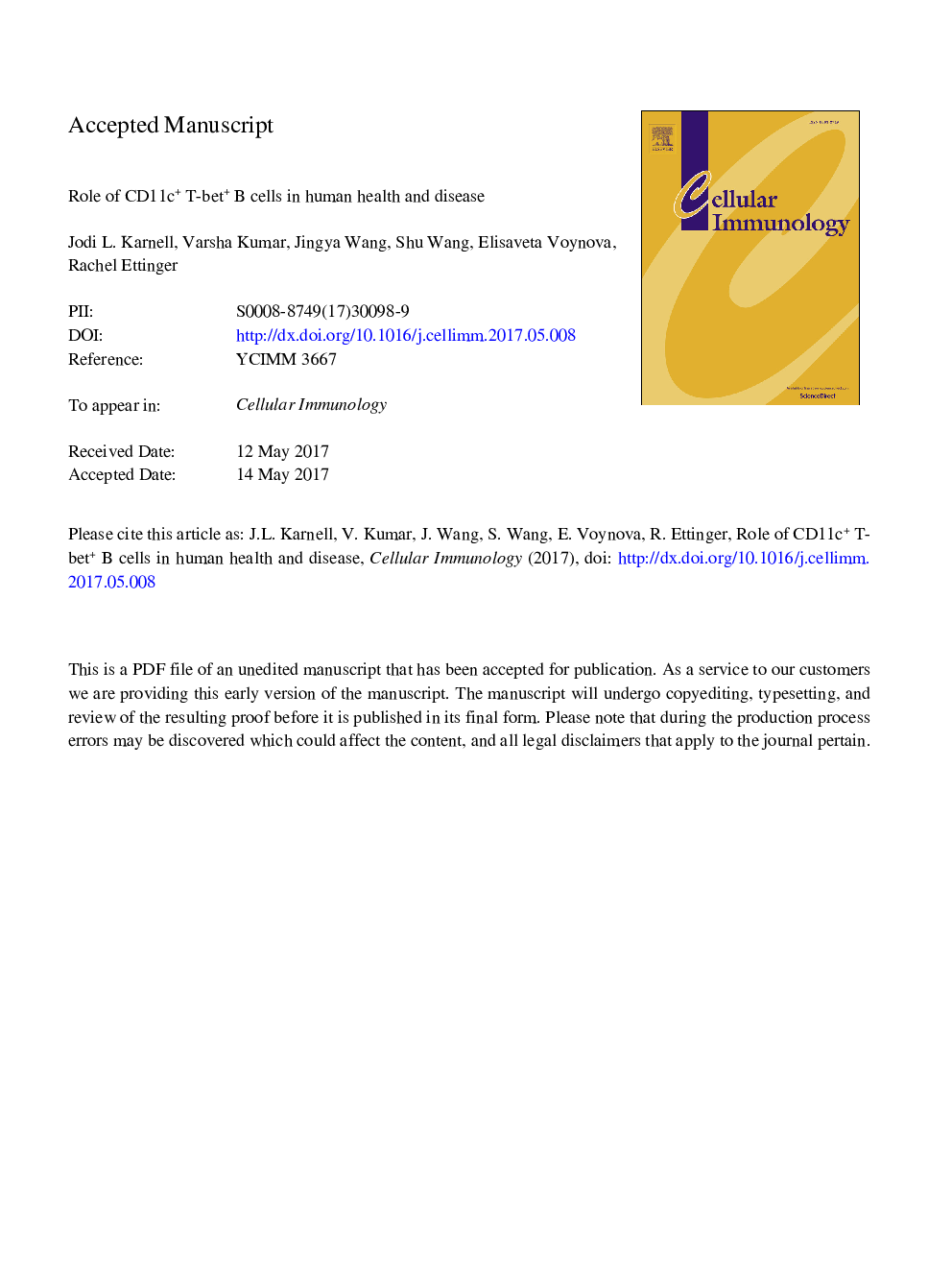| Article ID | Journal | Published Year | Pages | File Type |
|---|---|---|---|---|
| 8463643 | Cellular Immunology | 2017 | 18 Pages |
Abstract
A growing body of evidence suggests that when B cells are chronically stimulated, a phenotypically unique subset expands. Data suggest that this atypical population contains B cell receptor (BCR) specificities capable of binding the antigen, or sets of antigens that initiated the expansion of these cells. These B cells have been given various names, including double negative B cells, atypical memory B cells, tissue-like memory B cells, or age associated B cells (ABCs). However, on close inspection these reports described B cell subsets that closely resemble B cells we refer to as CD11c+ B cells that often express T-bet. Here we will review the human studies that describe atypical memory B cells and compare and contrast their phenotype and suggested function in health and disease.
Related Topics
Life Sciences
Biochemistry, Genetics and Molecular Biology
Cell Biology
Authors
Jodi L. Karnell, Varsha Kumar, Jingya Wang, Shu Wang, Elisaveta Voynova, Rachel Ettinger,
